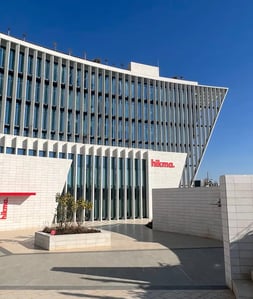Sanofi (SNY), the Paris-based healthcare giant, is making waves in the investment community, backed by an impressive potential upside of 23.96%. With a current market cap of $125.78 billion, Sanofi stands as a formidable player in the drug manufacturing sector, offering a range of therapeutic solutions across immunology, rare diseases, neurology, oncology, and vaccines. As investors eye the healthcare sector for stable returns, Sanofi’s stock presents a compelling case.
Sanofi’s share price is currently at $51.5, with a modest price change of 0.04%. Over the past 52 weeks, the stock has traded between $45.39 and $59.42, indicating a level of volatility typical of large pharmaceutical companies. However, the stock has recently shown positive momentum, trading above its 200-day moving average of $52.85, though slightly below the 50-day moving average of $55.08. The RSI (14) at 64.09 suggests that the stock is nearing overbought territory, which could indicate further price adjustments in the near term.
Despite the lack of a trailing P/E ratio and other traditional valuation metrics, the forward P/E of 10.38 suggests that Sanofi is attractively priced relative to its future earnings potential. While revenue growth has seen a dip of 3.10%, the company’s robust EPS of 2.41 and a return on equity of 7.30% offer a glimpse into its profitability and management effectiveness.
Sanofi’s dividend yield of 3.96% is particularly appealing to income-focused investors. However, the high payout ratio of 85.70% warrants a cautious approach, as it indicates that a significant portion of earnings is distributed as dividends, potentially limiting reinvestment opportunities.
Analyst sentiment around Sanofi is predominantly positive, with 7 buy ratings, 2 hold ratings, and no sell ratings. The target price range of $62.00 to $67.00 further underscores the bullish outlook, with the average target price of $63.84 highlighting the potential for significant gains.
In the realm of strategic partnerships, Sanofi’s collaborations with Exscientia, ABL Bio, and others in developing novel therapies reflect an aggressive expansion into cutting-edge biomedical research. These partnerships not only strengthen Sanofi’s pipeline but also position it at the forefront of innovation in the healthcare industry.
Free cash flow remains a concern with a significant negative figure of -$4.94 billion, which could impact the company’s ability to invest in growth initiatives without leveraging debt. However, given its solid market position and strategic alliances, Sanofi is well-equipped to navigate these financial challenges.
For individual investors considering Sanofi, the company’s strong market position, coupled with its strategic focus on innovation and substantial potential upside, make it an attractive prospect. The healthcare sector’s resilience, particularly amidst global health challenges, further enhances Sanofi’s appeal as a long-term investment. As Sanofi continues to leverage its extensive expertise and partnerships, its growth trajectory remains promising for investors seeking exposure in the drug manufacturing industry.





































